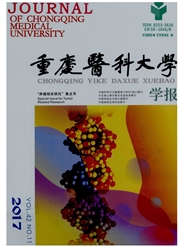

 中文摘要:
中文摘要:
目的:通过体外器官培养系统,探讨甲状旁腺激素相关蛋白(Pamthymid hormone—related protein,PTHrP)在新骨生成和骨组织破坏方面的效应。方法:将全长PTHrP(-36~+141)cDNA克隆进真核表达载体pcDNA3.1(+),并用重组质粒pcDNA3.1~阿HrP转染LCC15-MB乳腺癌细胞,在体外器官培养系统里加不同浓度含PTHrP的条件培养上清液培养小鼠颅盖骨。通过组织学方法检测PTHrP141在新骨形成和骨组织破坏方面的效应。结果:转染的乳腺癌细胞产生的PTHrP在低剂量时诱导骨的形成,而高剂量时诱导骨的再吸。结论:PTHrP在新骨的形成和骨组织的破坏方面因其浓詹的不同而且右不同妁府.
 英文摘要:
英文摘要:
Objective:To determine the role of PTHrP in new bone formation and bone destruction and the mechanisms involved. Methods: LCC 15-MB breast cancer cells were transfected with full-length PTHrP-141 cDNA, and the conditioned medium was collected and cultured with mouse calvarial bones in an in vitro organ culture system. The effects of 1PTHrP-141 on new bone formation and bone destruction were examined by histological examination. Results: PTHrP produced from transfected breast cancer cells induced new bone formation at lower doses and bone resorption at higher concentrations. Conclusion: These results provide direct evidence that PTHrP plays a biphasic role in bone remodeling depending on the concentration administered.
 同期刊论文项目
同期刊论文项目
 同项目期刊论文
同项目期刊论文
 期刊信息
期刊信息
